This Is How to Make Small Awesome
And woohoo, we're No. 1!
Design Your Wild is now the No. 1 Substack about North American garden design! This distinction garners attention for our mission: to bring joy and bolster biodiversity with great design and native plants. I appreciate each of you joining me in this journey to create beautifully designed, mostly-native yards. And I am especially thankful to paying subscribers whose support drives the league tables.
Dear Heather, I live in an urban area. Any ideas about how to adapt some of this [Design Your Yard workshop advice] to a smaller lot? — Abby
Pack it in! You can compress seating, rooms, views, structure, even paths into small yards, patios, and balconies if you allow elements to serve double duty. The before-and-after design example in Dream Big Now is a small London backyard that does just that. And so is the one used to test your style knowledge.
But it’s true our workshop focuses on the overall yard layout more than the individual rooms within it, and the smallest garden has just a single room or destination. So what makes a great garden room?
To answer, I tried to distill the essences of more than 50 images of well-designed small gardens that can be created with North American natives (though most are not). I found even the smallest share five elements — elements that elevate garden rooms of any size:
Seating
Vertical interest
Statement hardscaping
A narrow palette
Layers of vegetation
These elements are summed up by garden designer Sheila Jack in a recent article on designing small gardens:
I like to use a restricted palette of natural materials linked to the surrounding architecture — for example, simple but good materials including buff York stone, Cotswold gravel and a painted cedar trellis combined with a simple palette of plants suited to the conditions. Editing the planting to six to ten varieties in a tight space makes for a more successful scheme. Make use of neighbouring trees to extend views into and out of the garden. Often, we use the tree canopy beyond to enhance the woodland feel and sense of place. Painting boundaries dark colours will make them disappear. … Layers of transparent planting or multi-stemmed trees with a light canopy, such as Amelanchier x lamarckii, will filter views into and out of a space. — Gardens Illustrated, May 2025
Here are examples of tiny but complete gardens in various Yardenalities. (See “How” for plant suggestions.)
Color blocking
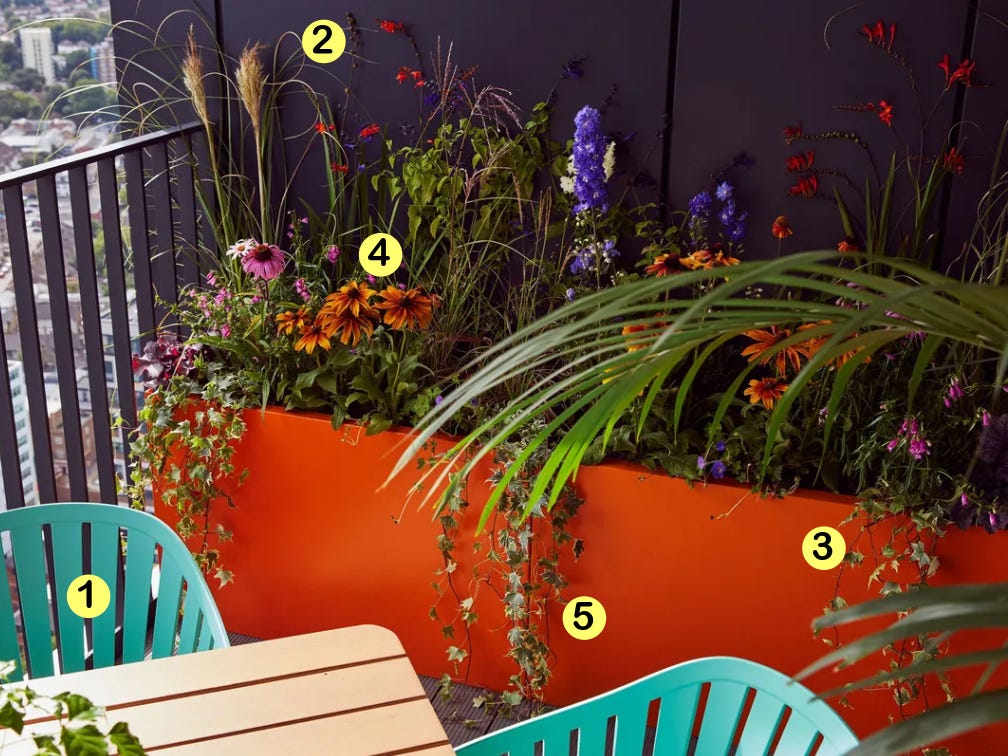
Statement hardscaping — bright turquoise seating and a single tall, wide orange planter — makes this tiny balcony garden. It is reminiscent of the work of the influential Arizona landscape designer Steve Martino, who “blends colorful man-made elements with native plants to reflect the sun-drenched beauty of the desert.” (Garden Design)
Although the flowers introduce several colors, the repeating orange blooms pick up on the planter and keep the palette unified. The palm in the foreground (probably in another pot) creates vertical interest while the variety of flowers, grasses and trailing vines introduce layers in a confined space.
Maximal greenery
This narrow, leafy side yard has the same elements to a totally different effect — Blooming Romantic vs. Williams’ Prairie Modern balcony. What really makes it is the layering — especially the vines, dense at the back gate and more open on the left. Another vertical element is the open, multi-stem tree in the foreground, a planting choice in most of the great tiny gardens I picked. The narrow palette includes lilac and white blossoms and beige seating, weathered wood and path materials punctuated by a few very dark (black? eggplant?) planters.
Open, multi-stemmed trees

The small, multi-stemmed trees in containers are the stars of this London rooftop garden by Marcus Barnett Studio. They are not only vertical, but so sculptural! The planting layers also include under plantings, lower containers, and a boundary hedge. The contrast of trees with low plantings — including lots of ferns — is classic A Walk in the Park Yardenality. The statement hardscaping is the beige and pale terracotta modern rattan furniture, which contrasts effectively with the green-on-green plant palette.
Only the essentials

This tiny garden is in interior designer Tom Morris’s home at the famed London Brutalist landmark, the Barbican. There’s a tall narrow tree — multi-stemmed, of course — behind the curtain on the right, but the real vertical interest is provided by the cranes and modern buildings seen over the balcony. (My husband Pete: “Seriously?”)
The simplicity of the white mid-century bench facing inward, the row of standard one-size terracotta pots, and the textured concrete railing makes a statement consistent with the Brutalist architecture. The mix of unruly greenery with purple and white blooms, reaching from the floor to the top of the railing, contrasts effectively with this restrained hardscaping. (I hope Morris hides the pots and centers the bench, or at least cuts down the plants, when the perennials die back.)
Front yard with it all

Finally, a front yard with all the elements of a successful garden room, including seating, which is hidden behind the log wall at left. Here’s how Chelsea award-winning garden designer Charlotte Harris describes it:
A wonderful example of balancing aesthetics and ecological impact, this front garden in Groningen, the Netherlands, was designed and built by owner Marianne Fry. Upright untreated chestnut posts create a naturalistic border while enhancing biodiversity and supporting invertebrates. Taller sections offer privacy, and lower sections, while still providing enclosure, ensure a sense of welcome to the front door. The slate gravel path improves permeability while also serving as a mulch for surrounding beds. A repurposed hardwood mooring post from the local harbour forms a welcoming ‘beer-with-neighbours’ bench. — Gardens Illustrated
Now, don’t you agree that small is awesome?
— Heather
10 Weekends to Wild Challenge #7: Daily stroll (redux)
I’m repeating this challenge in hopes you’ll make the daily stroll a habit. It’s so good for your wellbeing! Find a time of day that works for you to make a circuit of your yard — or if you have a tiny yard, then sit for five minutes. And observe: What changed since yesterday? What bees, birds, and butterflies do you see? You’ll be practicing mindfulness, as well getting exercise and breathing fresh air. (If you need more motivation, see 12 benefits of gardening from recent research.)
ICYMI
Challenge #1: Check your winter views
Challenge #2: Score some seating
Challenge #3: Name your theme
Challenge #4: Get thee to a nursery!
Challenge #5: A daily stroll
Challenge #6: Note what’s blooming
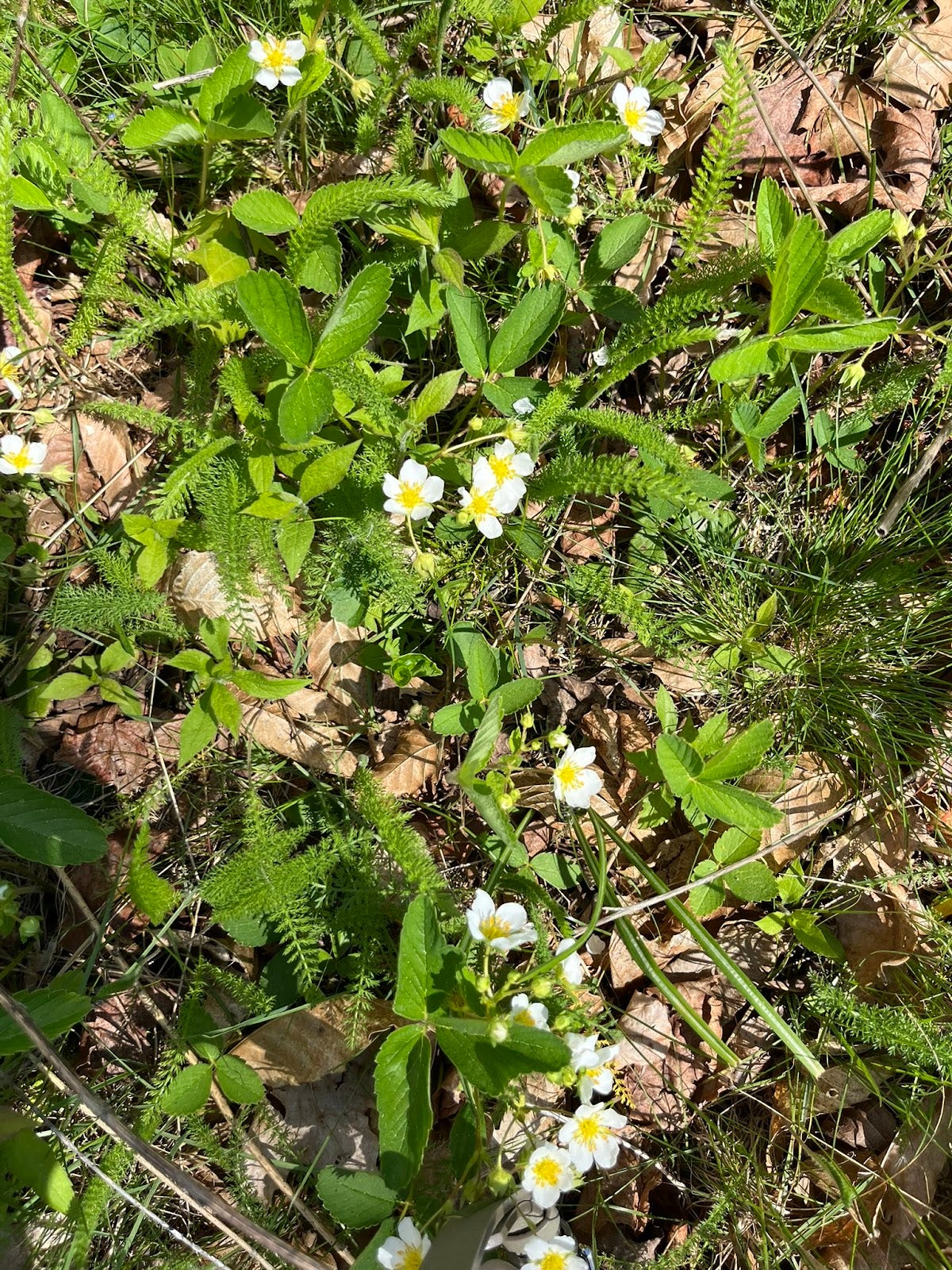
Why, How, Wow!
Why? Every little bit counts
Have you gotten your Wildr Score? My biggest takeaway was that I can’t tell bumblebees apart and wouldn’t recognize a sweat bee if it landed on my nose. This summer, I’m going to observe bees more closely to learn to appreciate their unique roles in our ecosystem.
Even small urban gardens can help save our native bees, many of which are imperiled, including one quarter of native bumblebees, according to a Xerces Society analysis. A meta-analysis of 50 years of bee studies concluded that urban gardens represent high quality habitat even for specialist bees.
Studies of urban garden bees have documented between 674 (conservative count, excluding morphospecies) and 830 (liberal count, including morphospecies) bee species. Urban garden bee communities were taxonomically and functionally diverse, although bee species that were non-eusocial, ground-nesting, generalist foragers, and native were most common in garden habitats. The proportion of parasitic bee species and specialist foragers found in urban gardens was comparable to proportions for global bee taxa. This suggests that gardens contain the hosts and forage needed to support bees with specialized life history requirements, and thus represent high quality habitat for a subset of bee communities. — Frontiers in Sustainable Cities
To find plants of special value to native specialist and bumble bees, check out Xerces Society’s regional Pollinator-Friendly Native Plant Lists.
How: Native plants for small gardens
Unless you have a tiny balcony garden, I recommend focusing first on vertical interest — vines and sculptural multi-stemmed trees. Witch hazel, shadberry, blackhaw, beach plum, chokeberry, and bayberry are great small, multi-stemmed trees that thrive in containers, as do most native vines. Next, pick your shrubs, then your perennials.
Balcony Gardens: Planting Native Plants in Pots & Containers (east of the Rockies)
Native Plants That Are Happy in Containers (California)
Wow! Yet another pitch for Courtyard Chic
Did you notice I haven’t mentioned evergreens? That’s because I featured images of the three Yardenalities the vast majority of you prefer. Personally, however, I’d love to have an evergreen-dominated Courtyard Chic urban garden like the one below. They are easy and look great year-round.
Whatever your garden size and style, consider adding some evergreens for year-round color and structure. I just bought six ‘Shamrock’ dwarf inkberries (Ilex glabra) to plant in pairs of planters to add a formal element to my very wild garden; they look just like the box balls below with greater ecological value. See Best Small Native Evergreen Shrubs (for all regions).
When it comes to the plants in a small garden, I start by thinking about what the planting will look like in winter and always include a generous percentage of evergreen plants. It’s good to focus on foliage shapes and textures, sprinkling through with seasonal colour. Go for a single idea and run with it. ... Don’t be afraid of taller plants — remember that the sky is your ceiling — and use perennial species in generous groups. — Declan Buckley in Gardens Illustrated, May 2025
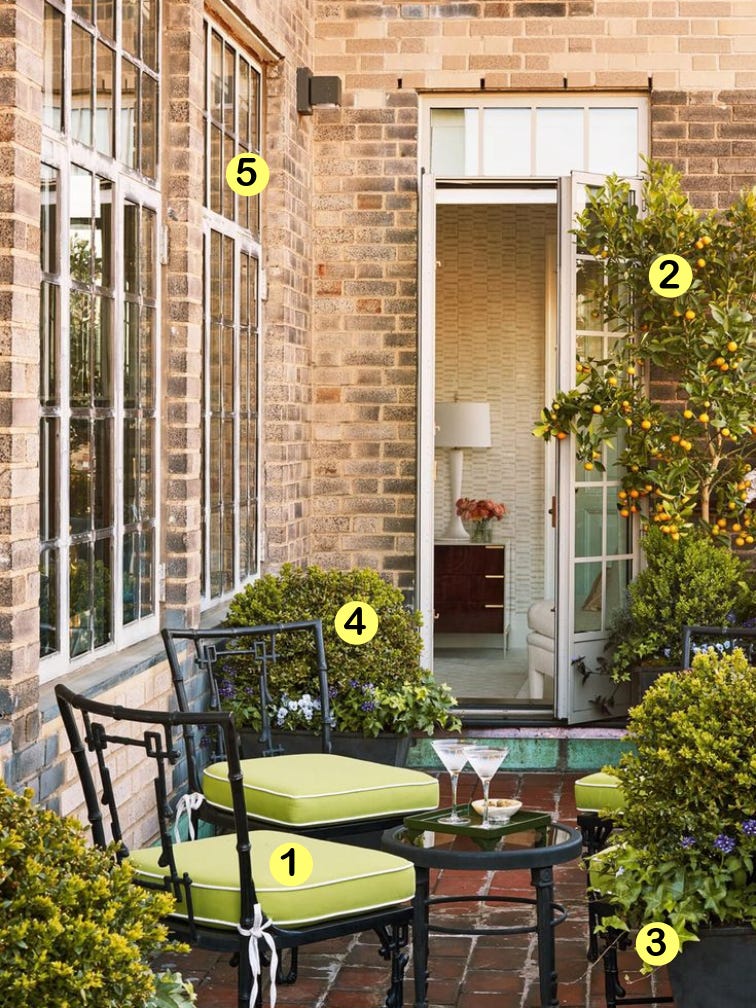
To support my work, please share this newsletter with a friend, become a paying subscriber, or encourage me with a like or comment. I love hearing from you!


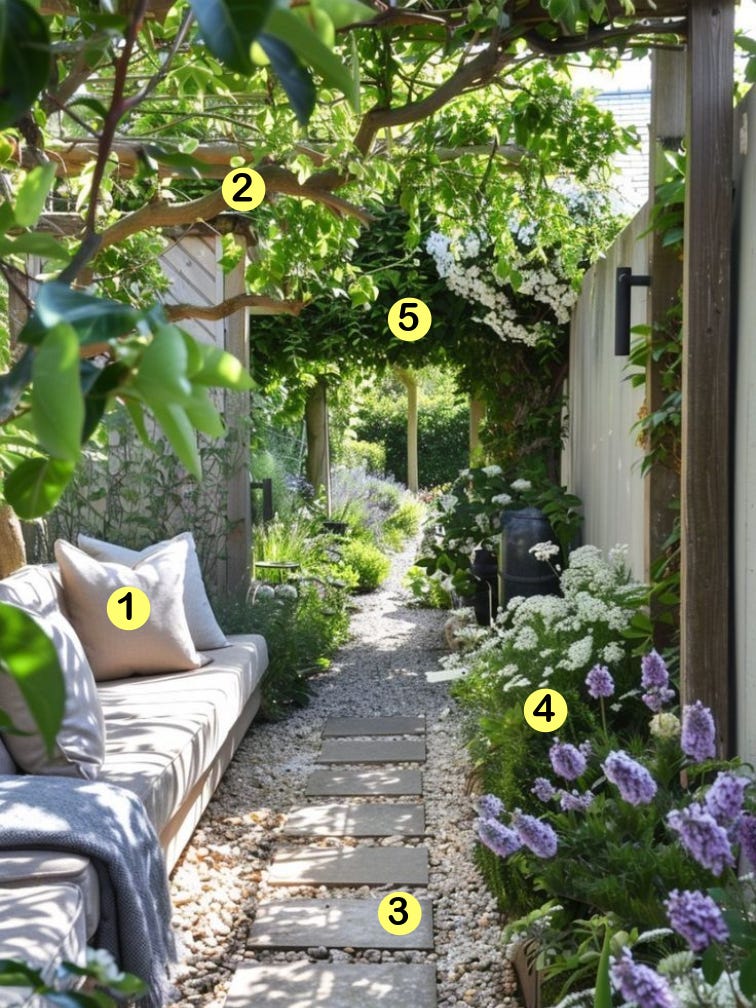
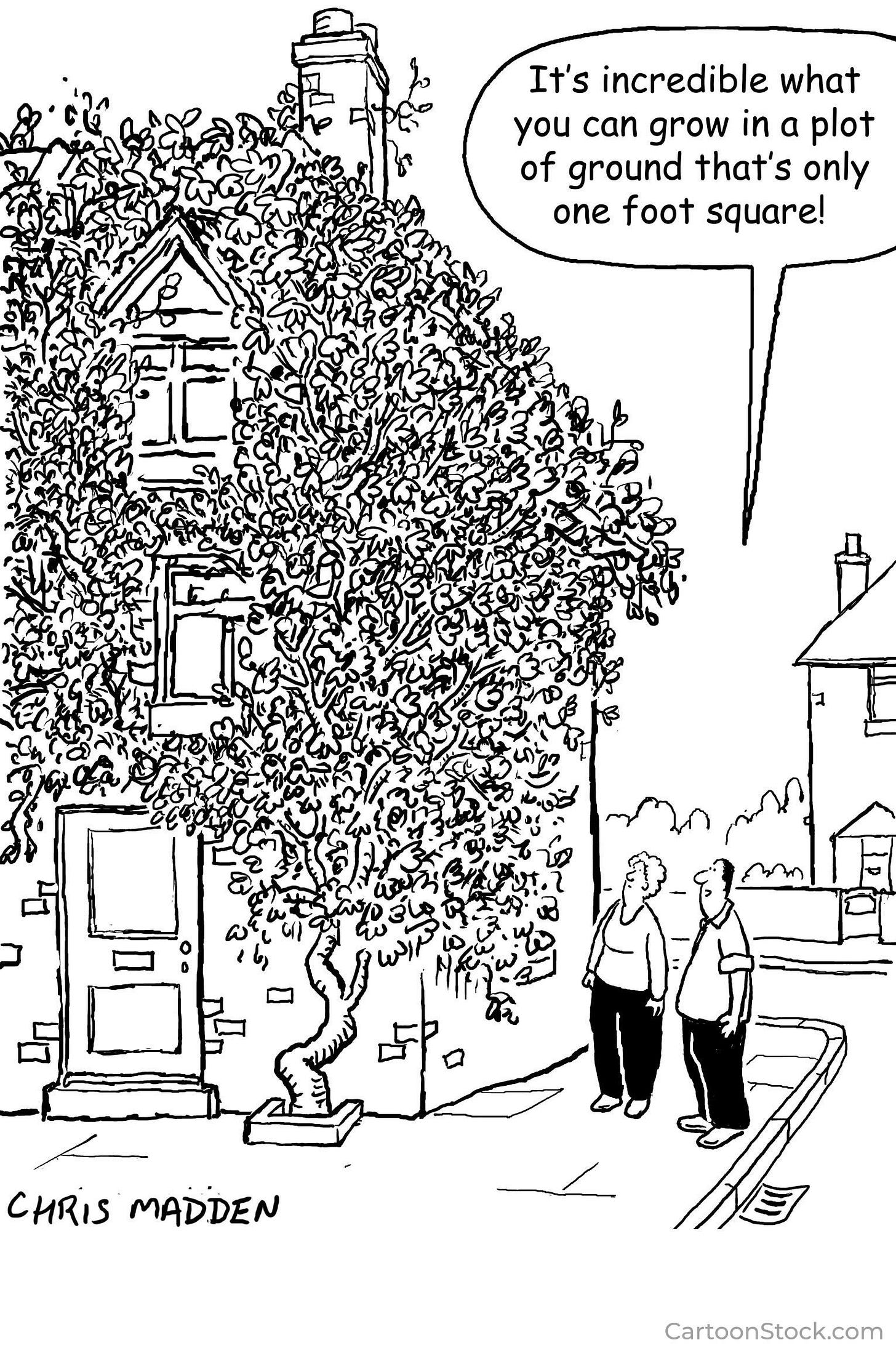
So much great info & inspo packed into this! Thank you.